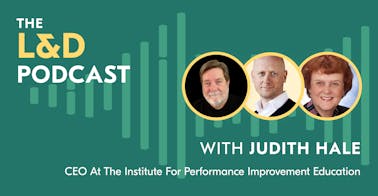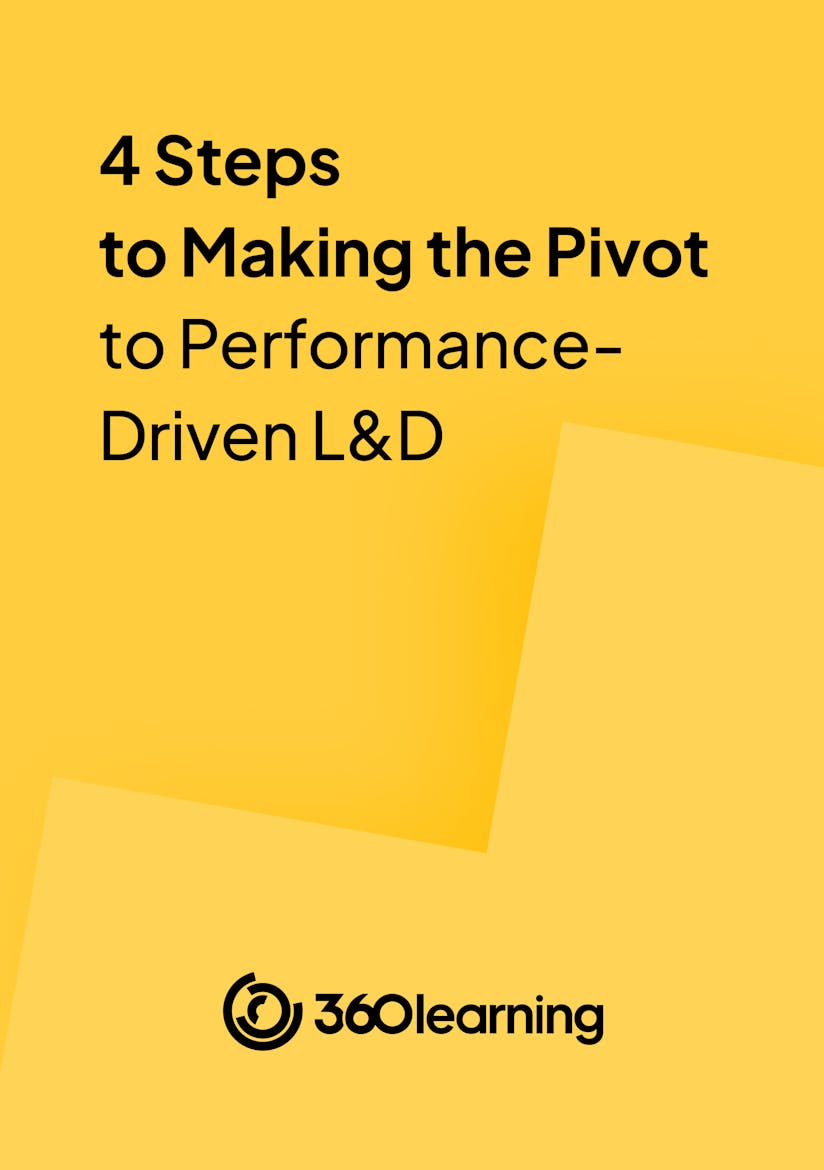
As L&D leaders, we’re sometimes guilty of designing and implementing training programs without measuring their effectiveness on employee performance. This makes proving the business impact of training an elusive goal for L&D teams. But it doesn’t have to be this way.
In the third episode of our insightful mini-series on measuring impact, I speak with Bonnie Beresford, human capital strategist, performance consultant, and creator of Measurement Map®, about business impact and how to make it attainable, planned, and measurable.
Read on to hear more about how measuring business impact drives L&D’s alignment with organizational goals, some common problems you may face, and when it is easy (and not so easy) to measure the impact of your training programs.
What is business impact?
When we discuss business metrics, the word ‘business’ is crucial. Our stakeholders want to know if we are impacting their business.
“For me,” Bonnie explains, “business impact has always been about digging into the business data because that's more credible than a survey of a learner saying how much they think they have improved.”
Business impact has always been about digging into the business data because that's more credible than a survey of a learner saying how much they think they have improved.
Measuring business impact drives L&D’s alignment
In Bonnie’s experience, measuring business impact is important because it drives L&D’s alignment with the organization and its business goals.
Alignment is getting the business stakeholders to articulate what success looks like, the business goal, and what performance learners need to do to realize that goal,” she says. “Until you start with that strategic goal, it's tough to build a good learning program.”
The alignment with business goals will help you and your team build better learning programs because once you’ve articulated what the learner must do, you can design training to be more focused.
Related: The Bigger Picture: Mirjam Neelen’s 4 Tips on Aligning Stakeholders When Pivoting to Performance L&D
Common problems that hinder business impact measurement
There have been a lot of surveys, Bonnie explains, about why learning and development haven’t been measuring business impact.
“A recent one by Watershed found that up to 98% of learning leaders want to measure business impact, but just under 16% say they have the ability or confidence to do so,” she says.
The top two reasons for not measuring impact are competing priorities and a lack of knowledge on what and how to measure, with some also citing difficulty obtaining data. “I have pushed the organizations I've worked with to figure out what to measure,” Bonnie says.
So, how do we solve these common problems? It starts with a focus on performance-based L&D.

Impactful, demonstrable L&D in 4 simple steps
By providing your contact info, you agree to receive communications from 360Learning. You can opt-out at any time. For details, refer to our Privacy Policy.
L&D needs to be performance-focused
Returning to the alignment between learning and development, we need to be more performance-focused.
L&D teams need line managers to coach and support employees, a strong organizational learning culture, and buy-in from the C-suite. However, the very essence is that learning and development can be costly in terms of:
- The cost of buying solutions
- Taking the time to research and design internal solutions
- Taking people away from work
- Technology systems are very expensive.
But if we don’t implement our solutions to affect performance, then many of our efforts and solutions will be expensive—and Bonnie agrees.
Related: Doing More With Less: David James’s 4-Step Approach to Visible and Impactful L&D
Measure to prove, measure to improve
One of Bonnie’s mantras is ‘measure to prove, measure to improve” because if you measured the impact of an expensive program and found it didn’t work, you’d cut it.
An important part of measuring is to improve and find out where training is working, but if you don't measure and keep running it year after year, you're wasting resources, people's time away from the job, and your trainers’ time.
“People will say training is expensive,” Bonnie explains, “and training that does no good is even more expensive, but if it's pulling its weight and delivering results, nobody's going to complain about the cost.”
Training that does no good is even more expensive, but if it's pulling its weight and delivering results, nobody's going to complain about the cost.
When is it easy to measure impact, and when is it not?
As Bonnie finds, measuring impact is easiest when you have performance metrics at the individual level, like salespeople with individual metrics of calls or sales made.
“When you have individual performance metrics for somebody who's delivering and outputs that the company counts, that's absolutely the easiest training to measure,” she says. “I'd recommend somebody start on their measurement journey into impact with a scenario such as this.”
“Where it's harder is when there are no concrete KPIs, like leadership development,” Bonnie adds, “but there's a great book called How to Measure Anything by Douglas W. Hubbard where he says all you have to do is focus on performance.”
Case study: ride and drive
To help illustrate how to measure business impact, Bonnie uses an example of an automotive company trying to improve the performance of their salespeople.
“They were organizing a ride-and-drive event where salespeople get to go to race tracks and drive the cars,” she explains. “They get the feel of their products versus the competitors—very expensive, and the company wanted to know if it was worth it.”
Bonnie and the team conducted an observational study looking at sales before and after the event. Segmenting the data by prior performance, they divided the group into low, average, and high performers.
“We saw that the greatest lift in sales were the average and low performers,” she says. “The high performers saw a dip in sales because they were so productive that the time away from the dealership took away sales.”
The study showed that the ride-and-drive event should not target high performers but rather the lower performers.
Expert tip: collect the data and stay curious
Bonnie recommends that you collaborate with your business partners to discuss the business problem that needs to be addressed through performance consulting.
“With these observable and measurable behaviors, start collecting data and dig in,” she says. “Set measuring business impact up as a bunch of hypotheses, get the data, have fun, and stay curious.”
Thanks to Bonnie for sharing her experience and insights with us! Check out our episode with Laura Paramoure on demystifying behavior change as the key to meaningful performance improvement or Kevin M. Yates about planning to make a measurable difference instead of leaving it up to chance.
Want more peer insights on transforming workplace learning? Sign up to become a member of the L&D Collective, and check out our other #CLOConnect interviews with top L&D leaders on driving growth and scaling culture through Collaborative Learning. Or you can subscribe (below 👇) to our weekly newsletter to receive our latest posts directly in your inbox.





